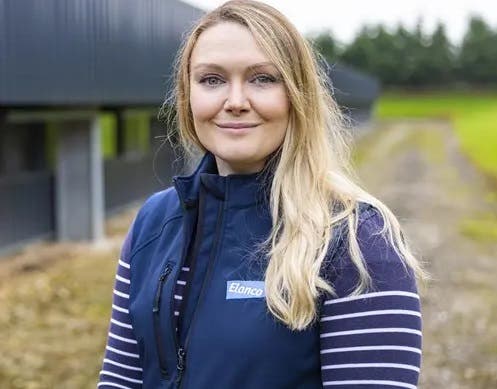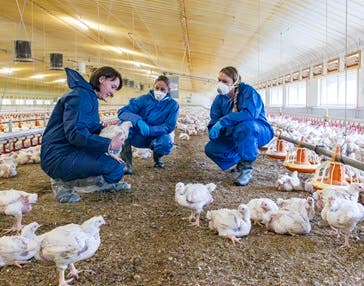Intestinal Integrity in UK broilers shows a strong start for 2025
Recent data from Elanco’s Health Tracking System (HTSi) shows that UK broilers’ Intestinal Integrity (I2) remained strong in the first half of 2025, with the positive trend from late 2024 continuing into this year.
Recent data from Elanco’s Health Tracking System (HTSi) shows that UK broilers’ Intestinal Integrity (I2) remained strong in the first half of 2025, with the positive trend from late 2024 continuing into this year.
I² is a unique, weighted index that gives birds a score of between 0 and 100, based on 23 health conditions which are known to negatively impact intestinal health, with higher scores indicating better intestinal health.
The average I2 score for the first six months of 2025 is higher than that of the same period in the previous three years, with June showing the highest average at 96.96.

Louise Ashworth, Strategic Services Lead
Louise Ashworth, Elanco’s strategic services lead, says that December 2024’s record high I2 score, set this year off on the right foot.
“We’ve seen a slight dip in I2 in spring 2025, but this isn’t unusual,” she explains.
“High winter disease pressure and the challenges of effective clean-out during the colder months often take a crop or two to fully impact scores, which helps explain the delayed drop following December’s peak.”
As part of the overall I2 score, HTSi monitors a range of lesions, including cellular sloughing, hyperaemia, and intestinal haemorrhage.
“We’ve observed significantly lower incidences of these lesions across the board, including a reduction in poultry coccidiosis prevalence,” says Ms Ashworth.
“The challenges posed by Coccidia Eimeria have notably decreased, with no cases of Eimeria tenella recorded in June 2025.”
While it’s difficult to pinpoint the exact reasons behind these reductions, she says they are likely to be the result of a combination of factors.

“The changes to stocking density seem to have lowered disease pressures, but it’s important not to become complacent with disease control,” adds Ms Ashworth.
She says inadequate cleaning and disinfection to reduce turnaround time can lead to disease build-up.
“Thorough cleaning and disinfection between crops are crucial to reduce disease build-up, particularly ahead of winter when disease burdens tend to increase,” adds Ms Ashworth.
The report also highlights a slight change in the age at which coccidiosis in birds peaks, with E. acervulina and E. maxima being seen earlier and incidences of E. tenella peaking later.
“These figures represent industry averages, but it’s important to note that the timing of Coccidiosis peaks can vary from farm to farm,” she explains.
“Identifying the peak of Coccidiosis by necropsying birds at different stages is a valuable tool for making informed decisions about Coccidiosis treatment.”
Despite the figures showing that I2 is thriving, Ms Ashworth says stable and continuous coccidiosis control throughout the flock’s lifecycle should not be compromised and producers are encouraged to keep up good practice.
She notes an increase in tibial dyschondroplasia, which, while not contributing to the I2 score, has been observed more frequently during necropsies.
“This metabolic disease can affect welfare, feed intake, and ultimately growth and performance,” she says.
As a result, Ms Ashworth recommends monitoring culls due to leg health and lame birds, and consulting with your vet and nutritionist if high levels are seen.
Use medicines responsibly www.noah.co.uk/responsible. Elanco UK AH Limited, Form 2, Bartley Way, Bartley Wood Business Park, Hook RG27 9XA. Telephone: 01256 353131. Email: elancouk@elanco.com
Elanco Health Tracking System (HTSi), Elanco and the diagonal bar logo are trademarks of Elanco or its affiliates. © 2025 Elanco or its affiliates. Date of preparation: 07/2025.